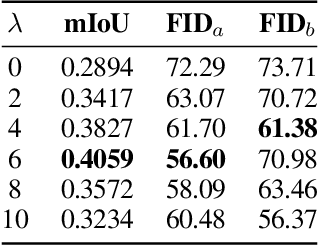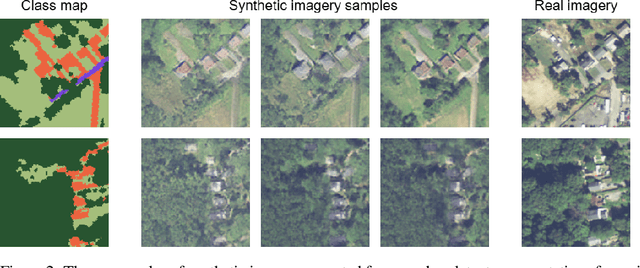Varshini Reddy
Boundless Byte Pair Encoding: Breaking the Pre-tokenization Barrier
Mar 31, 2025Abstract:Pre-tokenization, the initial step in many modern tokenization pipelines, segments text into smaller units called pretokens, typically splitting on whitespace and punctuation. While this process encourages having full, individual words as tokens, it introduces a fundamental limitation in most tokenization algorithms such as Byte Pair Encoding (BPE). Specifically, pre-tokenization causes the distribution of tokens in a corpus to heavily skew towards common, full-length words. This skewed distribution limits the benefits of expanding to larger vocabularies, since the additional tokens appear with progressively lower counts. To overcome this barrier, we propose BoundlessBPE, a modified BPE algorithm that relaxes the pretoken boundary constraint. Our approach selectively merges two complete pretokens into a larger unit we term a superword. Superwords are not necessarily semantically cohesive. For example, the pretokens " of" and " the" might be combined to form the superword " of the". This merging strategy results in a substantially more uniform distribution of tokens across a corpus than standard BPE, and compresses text more effectively, with an approximate 20% increase in bytes per token.
No Free Labels: Limitations of LLM-as-a-Judge Without Human Grounding
Mar 07, 2025Abstract:LLM-as-a-Judge is a framework that uses an LLM (large language model) to evaluate the quality of natural language text - typically text that is also generated by an LLM. This framework holds great promise due to its relative low-cost, ease of use, and strong correlations with human stylistic preferences. However, LLM Judges have been shown to exhibit biases that can distort their judgments. We evaluate how well LLM Judges can grade whether a given response to a conversational question is correct, an ability crucial to soundly estimating the overall response quality. To do so, we create and publicly release a human-annotated dataset with labels of correctness for 1,200 LLM responses. We source questions from a combination of existing datasets and a novel, challenging benchmark (BFF-Bench) created for this analysis. We demonstrate a strong connection between an LLM's ability to correctly answer a question and grade responses to that question. Although aggregate level statistics might imply a judge has high agreement with human annotators, it will struggle on the subset of questions it could not answer. To address this issue, we recommend a simple solution: provide the judge with a correct, human-written reference answer. We perform an in-depth analysis on how reference quality can affect the performance of an LLM Judge. We show that providing a weaker judge (e.g. Qwen 2.5 7B) with higher quality references reaches better agreement with human annotators than a stronger judge (e.g. GPT-4o) with synthetic references.
How Much is Enough? The Diminishing Returns of Tokenization Training Data
Feb 27, 2025Abstract:Tokenization, a crucial initial step in natural language processing, is often assumed to benefit from larger training datasets. This paper investigates the impact of tokenizer training data sizes ranging from 1GB to 900GB. Our findings reveal diminishing returns as the data size increases, highlighting a practical limit on how much further scaling the training data can improve tokenization quality. We analyze this phenomenon and attribute the saturation effect to the constraints imposed by the pre-tokenization stage of tokenization. These results offer valuable insights for optimizing the tokenization process and highlight potential avenues for future research in tokenization algorithms.
Are Language Model Logits Calibrated?
Oct 21, 2024Abstract:Some information is factual (e.g., "Paris is in France"), whereas other information is probabilistic (e.g., "the coin flip will be a [Heads/Tails]."). We believe that good Language Models (LMs) should understand and reflect this nuance. Our work investigates this by testing if LMs' output probabilities are calibrated to their textual contexts. We define model "calibration" as the degree to which the output probabilities of candidate tokens are aligned with the relative likelihood that should be inferred from the given context. For example, if the context concerns two equally likely options (e.g., heads or tails for a fair coin), the output probabilities should reflect this. Likewise, context that concerns non-uniformly likely events (e.g., rolling a six with a die) should also be appropriately captured with proportionate output probabilities. We find that even in simple settings the best LMs (1) are poorly calibrated, and (2) have systematic biases (e.g., preferred colors and sensitivities to word orderings). For example, gpt-4o-mini often picks the first of two options presented in the prompt regardless of the options' implied likelihood, whereas Llama-3.1-8B picks the second. Our other consistent finding is mode-collapse: Instruction-tuned models often over-allocate probability mass on a single option. These systematic biases introduce non-intuitive model behavior, making models harder for users to understand.
SEC-QA: A Systematic Evaluation Corpus for Financial QA
Jun 20, 2024Abstract:The financial domain frequently deals with large numbers of long documents that are essential for daily operations. Significant effort is put towards automating financial data analysis. However, a persistent challenge, not limited to the finance domain, is the scarcity of datasets that accurately reflect real-world tasks for model evaluation. Existing datasets are often constrained by size, context, or relevance to practical applications. Moreover, LLMs are currently trained on trillions of tokens of text, limiting access to novel data or documents that models have not encountered during training for unbiased evaluation. We propose SEC-QA, a continuous dataset generation framework with two key features: 1) the semi-automatic generation of Question-Answer (QA) pairs spanning multiple long context financial documents, which better represent real-world financial scenarios; 2) the ability to continually refresh the dataset using the most recent public document collections, not yet ingested by LLMs. Our experiments show that current retrieval augmented generation methods systematically fail to answer these challenging multi-document questions. In response, we introduce a QA system based on program-of-thought that improves the ability to perform complex information retrieval and quantitative reasoning pipelines, thereby increasing QA accuracy.
An Analysis of Multilingual FActScore
Jun 20, 2024Abstract:FActScore has gained popularity as a metric to estimate the factuality of long-form texts generated by Large Language Models (LLMs) in English. However, there has not been any work in studying the behavior of FActScore in other languages. This paper studies the limitations of each component in the four-component pipeline of FActScore in the multilingual setting. We introduce a new dataset for FActScore on texts generated by strong multilingual LLMs. Our evaluation shows that LLMs exhibit distinct behaviors in both fact extraction and fact scoring tasks. No LLM produces consistent and reliable FActScore across languages with varying levels of resources. We also find that the knowledge source plays an important role in the quality of the estimated FActScore. Using Wikipedia as the knowledge source may hinder the true FActScore of long-form text due to its limited coverage in medium- and low-resource languages. We also incorporate three mitigations to our knowledge source that ultimately improve FActScore estimation across all languages.
Tokenization Is More Than Compression
Feb 28, 2024



Abstract:Tokenization is a foundational step in Natural Language Processing (NLP) tasks, bridging raw text and language models. Existing tokenization approaches like Byte-Pair Encoding (BPE) originate from the field of data compression, and it has been suggested that the effectiveness of BPE stems from its ability to condense text into a relatively small number of tokens. We test the hypothesis that fewer tokens lead to better downstream performance by introducing PathPiece, a new tokenizer that segments a document's text into the minimum number of tokens for a given vocabulary. Through extensive experimentation we find this hypothesis not to be the case, casting doubt on the understanding of the reasons for effective tokenization. To examine which other factors play a role, we evaluate design decisions across all three phases of tokenization: pre-tokenization, vocabulary construction, and segmentation, offering new insights into the design of effective tokenizers. Specifically, we illustrate the importance of pre-tokenization and the benefits of using BPE to initialize vocabulary construction. We train 64 language models with varying tokenization, ranging in size from 350M to 2.4B parameters, all of which are made publicly available.
DocFinQA: A Long-Context Financial Reasoning Dataset
Jan 12, 2024Abstract:Research in quantitative reasoning within the financial domain indeed necessitates the use of realistic tasks and data, primarily because of the significant impact of decisions made in business and finance. Financial professionals often interact with documents hundreds of pages long, but most research datasets drastically reduce this context length. To address this, we introduce a long-document financial QA task. We augment 7,621 questions from the existing FinQA dataset with full-document context, extending the average context length for each question from under 700 words in FinQA to 123k words in DocFinQA. We conduct extensive experiments of retrieval-based QA pipelines and long-context language models on the augmented data. Our results show that DocFinQA provides challenges for even the strongest, state-of-the-art systems.
BizBench: A Quantitative Reasoning Benchmark for Business and Finance
Nov 11, 2023Abstract:As large language models (LLMs) impact a growing number of complex domains, it is becoming increasingly important to have fair, accurate, and rigorous evaluation benchmarks. Evaluating the reasoning skills required for business and financial NLP stands out as a particularly difficult challenge. We introduce BizBench, a new benchmark for evaluating models' ability to reason about realistic financial problems. BizBench comprises 8 quantitative reasoning tasks. Notably, BizBench targets the complex task of question-answering (QA) for structured and unstructured financial data via program synthesis (i.e., code generation). We introduce three diverse financially-themed code-generation tasks from newly collected and augmented QA data. Additionally, we isolate distinct financial reasoning capabilities required to solve these QA tasks: reading comprehension of financial text and tables, which is required to extract correct intermediate values; and understanding domain knowledge (e.g., financial formulas) needed to calculate complex solutions. Collectively, these tasks evaluate a model's financial background knowledge, ability to extract numeric entities from financial documents, and capacity to solve problems with code. We conduct an in-depth evaluation of open-source and commercial LLMs, illustrating that BizBench is a challenging benchmark for quantitative reasoning in the finance and business domain.
Mask Conditional Synthetic Satellite Imagery
Feb 08, 2023



Abstract:In this paper we propose a mask-conditional synthetic image generation model for creating synthetic satellite imagery datasets. Given a dataset of real high-resolution images and accompanying land cover masks, we show that it is possible to train an upstream conditional synthetic imagery generator, use that generator to create synthetic imagery with the land cover masks, then train a downstream model on the synthetic imagery and land cover masks that achieves similar test performance to a model that was trained with the real imagery. Further, we find that incorporating a mixture of real and synthetic imagery acts as a data augmentation method, producing better models than using only real imagery (0.5834 vs. 0.5235 mIoU). Finally, we find that encouraging diversity of outputs in the upstream model is a necessary component for improved downstream task performance. We have released code for reproducing our work on GitHub, see https://github.com/ms-synthetic-satellite-image/synthetic-satellite-imagery .
 Add to Chrome
Add to Chrome Add to Firefox
Add to Firefox Add to Edge
Add to Edge